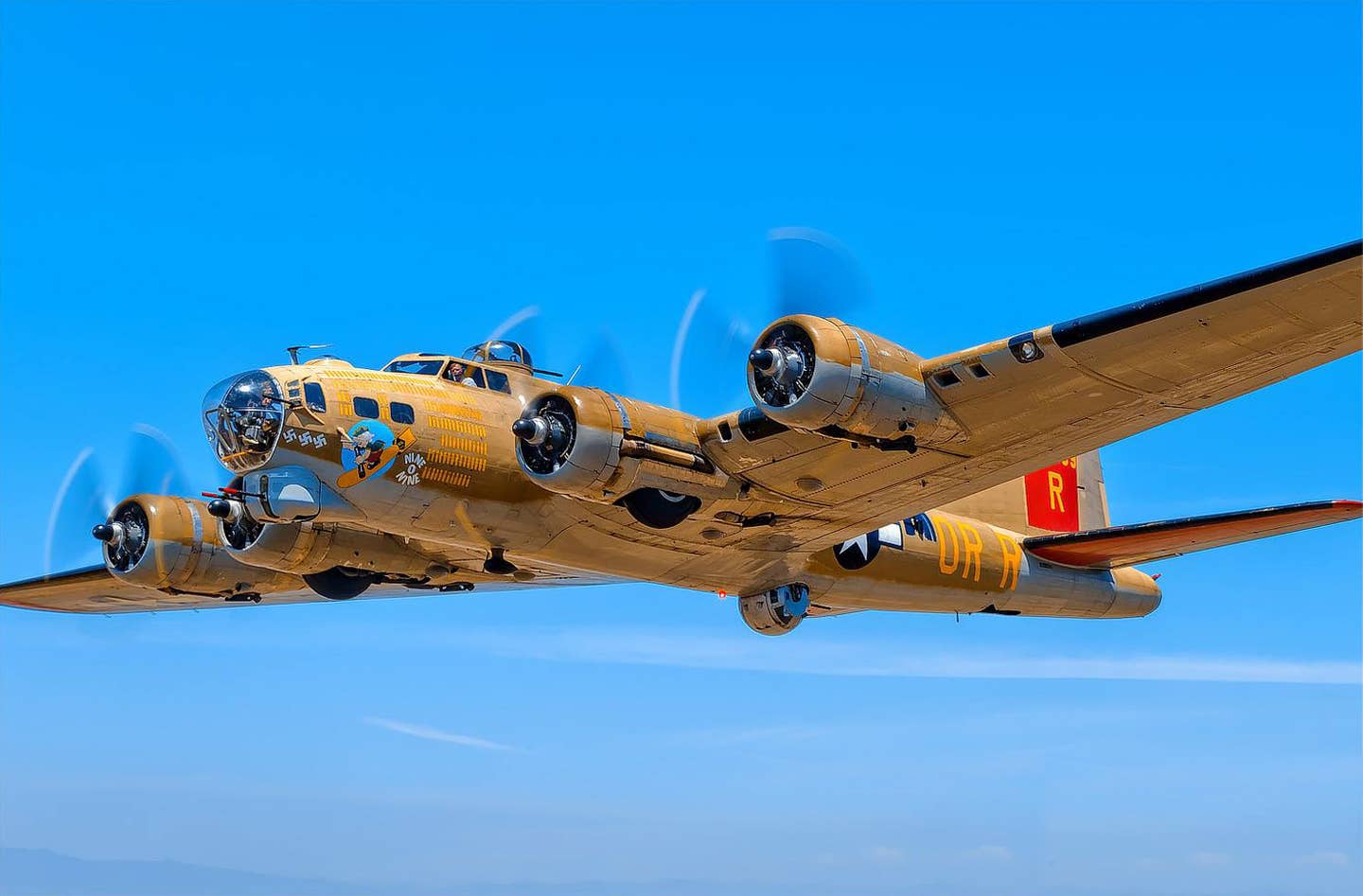
The Boeing B-17 Nine-O-Nine flew many veterans and their family and friends during its time with the Collings Foundation. Courtesy of the Collings Foundation
As the Collings Foundation’s crippled B-17, N93012, was approaching Runway 6 at Bradley Windsor Locks, Connecticut, a few weeks ago, the crew was already desperately pressed for altitude to try and align the World War II bomber with the runway for landing. Shortly after takeoff from Runway 6 just minutes before, the airplane never climbed above 500 feet agl before it began a return to the field with a mechanical problem reported in the number four engine. By the time the airplane was on downwind, its altitude had dropped to 300 feet. During the turn from base to final, the Boeing continued losing altitude, eventually striking the airport approach lights 1,000 feet short of the hard surface before it veered right and struck a number of vehicles, as well as a deicing fluid tank sitting 1,100 feet right of the runway threshold.
We know that shortly after takeoff as the Boeing was turning crosswind, one of the pilots notified ATC that the airplane needed to return to the field. The approach controller asked the pilot if the aircraft required any assistance, to which the pilot responded, “No.” ATC cleared other aircraft out of the B-17’s path despite the seeming lack of urgency on the part of the crew.
The NTSB's preliminary report of the B-17 accident published Tuesday said, "The wreckage came to rest upright and the majority of the cabin, cockpit, and right wing were consumed by postimpact fire." The report also confirmed the aircraft's landing gear was down, but that the approach was conducted with flaps up, possibly to minimize drag on the already damaged bomber.
The two pilots on board, as well as five passengers, died in the crash, while five others on board were seriously injured. One person on the aircraft received minor injuries, as did one person on the ground. The Bradley weather that morning brought clear skies and calm winds to the region. The B-17 appears to have been operated as it has in the past as part of the Collings Foundation’s Wings of Freedom tour flights held around the U.S.
During the initial forensic investigation, the NTSB inspector tested a fuel sample from both the B-17 and the line service truck that had added 160 gallons of 100LL before takeoff. Both smelled like avgas and neither tested positive for debris or water contamination. The NTSB’s investigation of the Boeing’s maintenance records seemed to confirm what most people believed anyway about how the Collings Foundation took care of its warbird fleet; with plenty of TLC. “The airplane was maintained under an airworthiness inspection program, which incorporated an annual inspection, and 25-hour, 50-hour, 75-hour, and 100-hour progressive inspections. Review of maintenance records revealed that the airplane's most recent annual inspection was completed on January 16, 2019. At that time, the airframe had accumulated about 11,120 total hours of operation. Engine Nos. 1, 2, and 3 had 0 hours since major overhaul at that time. Engine No. 4 had 838.2 hours since major overhaul at that time. The airplane's most recent progressive inspection, which was the 100-hour inspection, was completed on September 23, 2019. At that time, the airplane had been operated about 268 hours since the annual inspection.”

Sign-up for newsletters & special offers!
Get the latest FLYING stories & special offers delivered directly to your inbox






